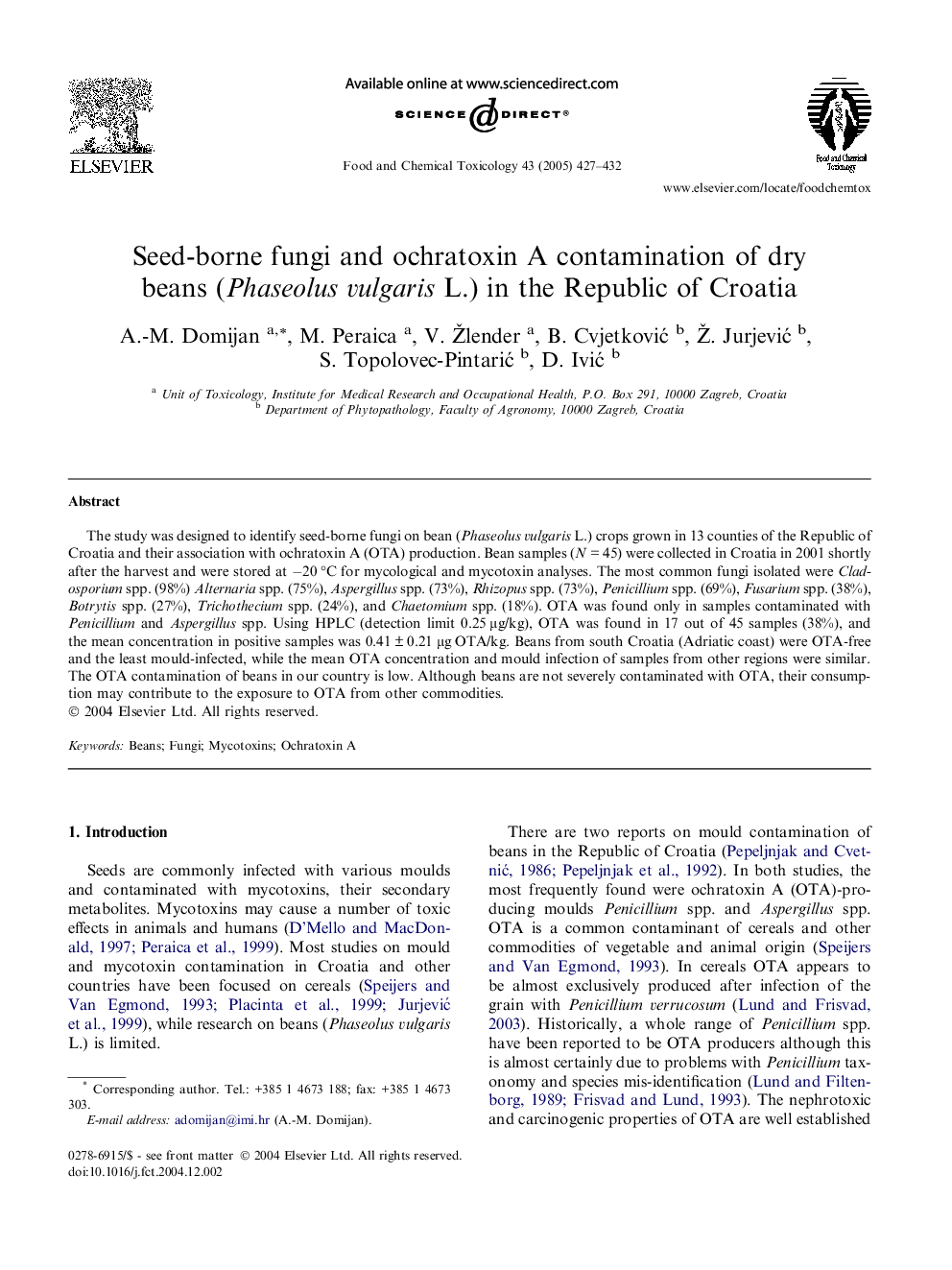| Article ID | Journal | Published Year | Pages | File Type |
|---|---|---|---|---|
| 9031118 | Food and Chemical Toxicology | 2005 | 6 Pages |
Abstract
The study was designed to identify seed-borne fungi on bean (Phaseolus vulgaris L.) crops grown in 13 counties of the Republic of Croatia and their association with ochratoxin A (OTA) production. Bean samples (N = 45) were collected in Croatia in 2001 shortly after the harvest and were stored at â20 °C for mycological and mycotoxin analyses. The most common fungi isolated were Cladosporium spp. (98%) Alternaria spp. (75%), Aspergillus spp. (73%), Rhizopus spp. (73%), Penicillium spp. (69%), Fusarium spp. (38%), Botrytis spp. (27%), Trichothecium spp. (24%), and Chaetomium spp. (18%). OTA was found only in samples contaminated with Penicillium and Aspergillus spp. Using HPLC (detection limit 0.25 μg/kg), OTA was found in 17 out of 45 samples (38%), and the mean concentration in positive samples was 0.41 ± 0.21 μg OTA/kg. Beans from south Croatia (Adriatic coast) were OTA-free and the least mould-infected, while the mean OTA concentration and mould infection of samples from other regions were similar. The OTA contamination of beans in our country is low. Although beans are not severely contaminated with OTA, their consumption may contribute to the exposure to OTA from other commodities.
Keywords
Related Topics
Life Sciences
Agricultural and Biological Sciences
Food Science
Authors
A.-M. Domijan, M. Peraica, V. Žlender, B. CvjetkoviÄ, Ž. JurjeviÄ, S. Topolovec-PintariÄ, D. IviÄ,
